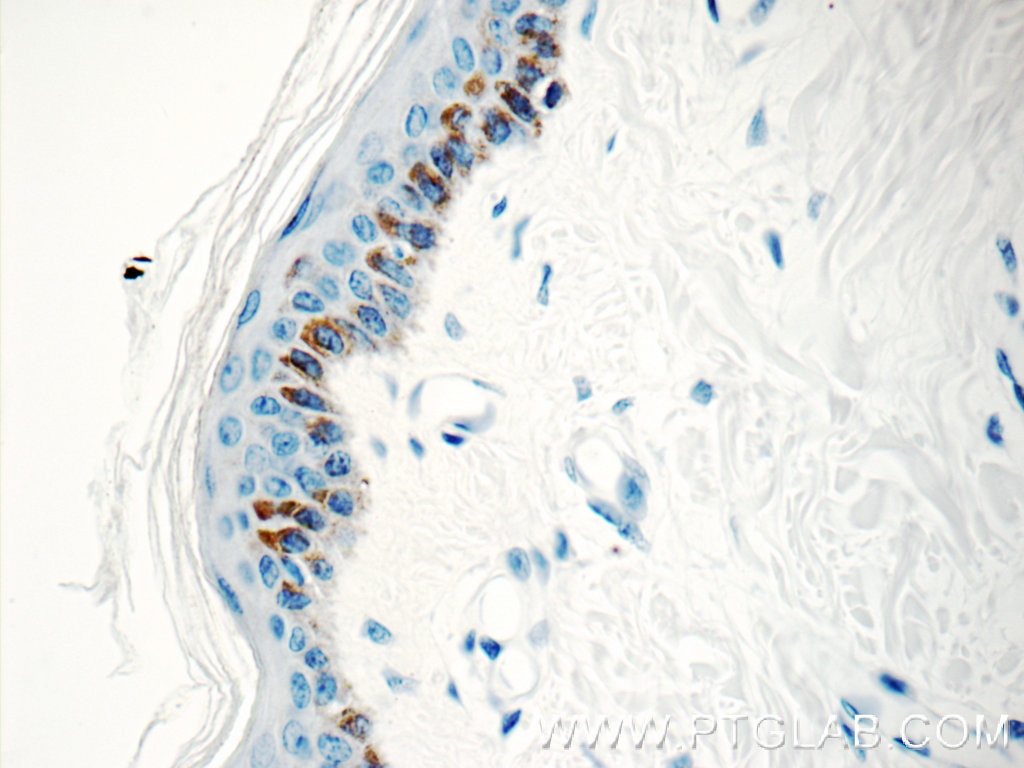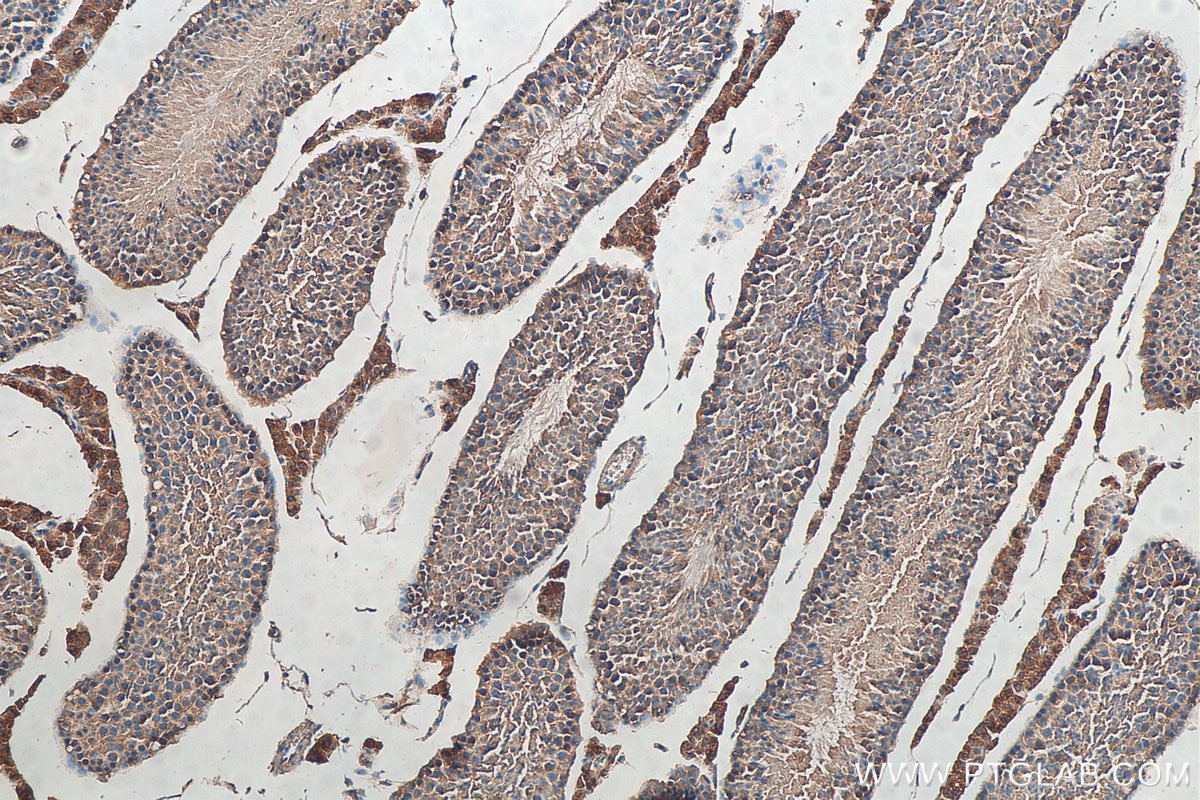Anticorps Polyclonal de lapin anti-Kallikrein 5
Kallikrein 5 Polyclonal Antibody for IHC, ELISA
Hôte / Isotype
Lapin / IgG
Réactivité testée
Humain, souris
Applications
WB, IF, IHC, ELISA
Conjugaison
Non conjugué
N° de cat : 10514-2-AP
Synonymes
Galerie de données de validation
Applications testées
| Résultats positifs en IHC | tissu cutané humain, tissu cutané de souris, tissu testiculaire de souris il est suggéré de démasquer l'antigène avec un tampon de TE buffer pH 9.0; (*) À défaut, 'le démasquage de l'antigène peut être 'effectué avec un tampon citrate pH 6,0. |
Dilution recommandée
| Application | Dilution |
|---|---|
| Immunohistochimie (IHC) | IHC : 1:20-1:200 |
| It is recommended that this reagent should be titrated in each testing system to obtain optimal results. | |
| Sample-dependent, check data in validation data gallery | |
Applications publiées
| WB | See 2 publications below |
| IHC | See 2 publications below |
| IF | See 1 publications below |
Informations sur le produit
10514-2-AP cible Kallikrein 5 dans les applications de WB, IF, IHC, ELISA et montre une réactivité avec des échantillons Humain, souris
| Réactivité | Humain, souris |
| Réactivité citée | Humain |
| Hôte / Isotype | Lapin / IgG |
| Clonalité | Polyclonal |
| Type | Anticorps |
| Immunogène | Kallikrein 5 Protéine recombinante Ag0799 |
| Nom complet | kallikrein-related peptidase 5 |
| Masse moléculaire calculée | 32 kDa |
| Numéro d’acquisition GenBank | BC008036 |
| Symbole du gène | KLK5 |
| Identification du gène (NCBI) | 25818 |
| Conjugaison | Non conjugué |
| Forme | Liquide |
| Méthode de purification | Purification par affinité contre l'antigène |
| Tampon de stockage | PBS avec azoture de sodium à 0,02 % et glycérol à 50 % pH 7,3 |
| Conditions de stockage | Stocker à -20°C. Stable pendant un an après l'expédition. L'aliquotage n'est pas nécessaire pour le stockage à -20oC Les 20ul contiennent 0,1% de BSA. |
Informations générales
KLK5(Kallikrein-5) is also named as SCTE and belongs to the kallikrein subfamily. This protein is predicted to be a secreted serine protease, and the enzyme is found to have proteolytic activity. In serum and ascites fluid, the protein is present in two forms, one at a relatively lower molecular mass (around 50 kDa), and another one around 150-180 kDa and native KLK5 is highly glycosylated or that it may interact with the gel filtration column, leading to delayed retention(PMID:12873991). The activation of the enzyme has been shown to require cleavage of an arginine residue (Arg66-Ile67), suggesting that a trypsin-like serine protease may be involved in this process(PMID:15713679).
Protocole
| Product Specific Protocols | |
|---|---|
| IHC protocol for Kallikrein 5 antibody 10514-2-AP | Download protocol |
| Standard Protocols | |
|---|---|
| Click here to view our Standard Protocols |
Publications
| Species | Application | Title |
|---|---|---|
Cancer Biomark Salivary KLK5 and uPA are potential biomarkers for malignant transformation of OLK and OLP | ||
J Dermatol Sci Dichotomous effect of ultraviolet B on the expression of corneodesmosomal enzymes in human epidermal keratinocytes. | ||
Cell Death Dis Long noncoding RNA HEIH depletion depresses esophageal carcinoma cell progression by upregulating microRNA-185 and downregulating KLK5. |







